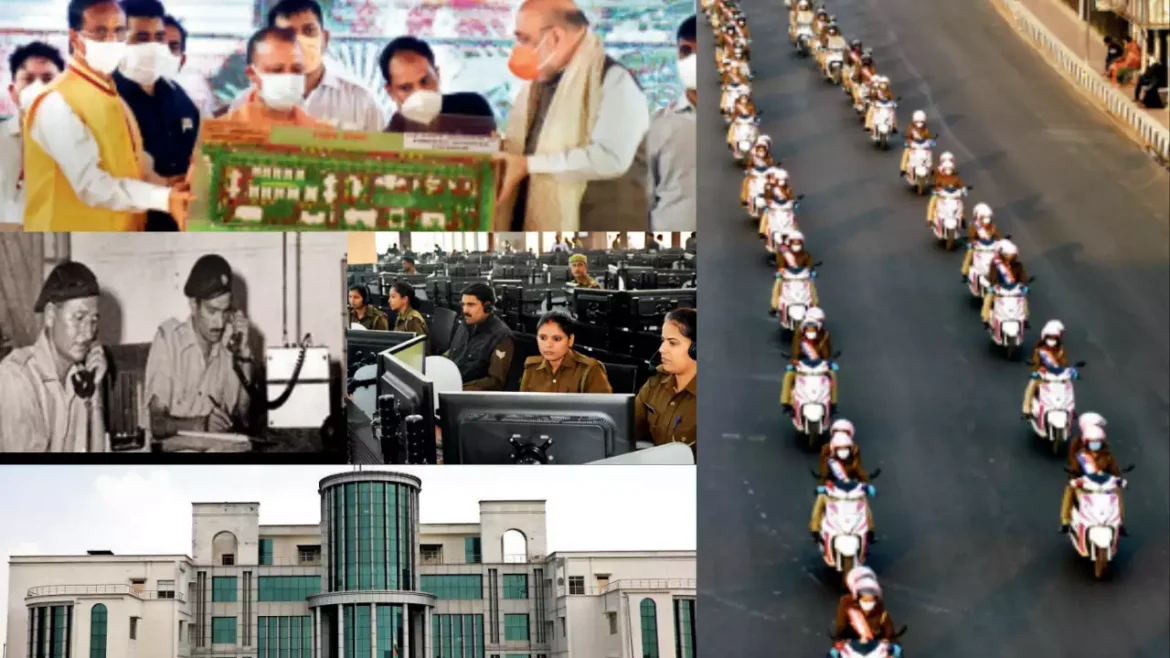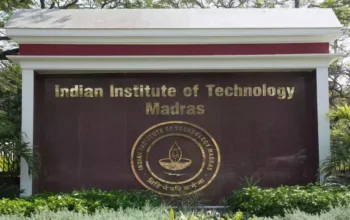Lucknow, known for its cultural heritage, has always embraced new technology. Over the past four decades, the city has been undergoing constant transformation to keep up with the rapidly changing world. In order to promote growth, infrastructure development, and industrialization, ensuring security is of paramount importance.
To achieve this, the police department in Lucknow has adopted the latest technology to establish an efficient law and order system. In 1938, under British rule, the United Province became the first state in India to use wireless technology for policing. In 1941, three static high-frequency radio stations were set up in UP, one of which was in Lucknow.
As the state capital and home to the state police headquarters, Lucknow has now implemented various advanced technologies and systems. These include the Crime and Criminal Tracking Network and Systems (CCTNS), the UP 112 emergency helpline service, digitization of police records, online First Information Reports (FIR), enhanced surveillance systems, and the establishment of specialized units like the Anti-Terrorist Squad (ATS), Special Task Force (STF), and Anti-Narcotics Task Force (ANTF).
The modernization of technology within the Lucknow Police truly began in the late 1990s when they faced a threat from a criminal named Sriprakash Shukla. In response, the Special Task Force (STF) was formed and equipped with the most advanced weapons and technology available at the time. The STF was the first police unit in the state to possess AK-47 rifles, and their officers were the first to travel by air for official duty. Additionally, the STF pioneered the system of tapping phone calls between mobile phones. Rajesh Pandey, a retired IPS officer who served in this elite force, recalls, “We were not only armed with the most sophisticated weapons in the state, but the government also ensured we had the best technology and means of transportation. We were provided with new Tata Sumo vehicles, which were like a dream for police operations. For the first time, an STF constable could travel by flight.”

In 2007, Lucknow became the first city in the state to have a unit of the Anti-Terrorist Squad (ATS). Initially, the ATS operated from a small office in Gomtinagar, but by 2016, it had grown into a comprehensive commando training center and headquarters with state-of-the-art facilities. To ensure the safety of passengers on the Lucknow Metro, VVIP buildings, and the Lucknow bench of the Allahabad high court, a specialized force called the Uttar Pradesh Special Security Force (UPSSF) was established. Modeled after the Central Industrial Security Force (CISF), the first battalion of the UPSSF was raised in Lucknow.
In order to address cybercrime and improve case investigations, the Uttar Pradesh State Institute of Forensic Science (UPSIFS) was established in Lucknow. This institute, the first of its kind, provides modern facilities and technology for scientific crime investigation. The UPSIFS collaborated with the Union home ministry to set up a separate unit for DNA testing in their upcoming center of excellence. Additionally, the National Forensic Sciences University (NFSU) established a center of excellence at UPSIFS to provide training and research in police administration and forensic science.
Lucknow is also home to one of the largest emergency response systems in India, UP 112. This system ensures prompt services for over 24 crore people in Uttar Pradesh, anytime and anywhere. UP 112 has been recognized as one of the top innovations in the country.
The UP 112 emergency response system has significantly improved its response time, reducing it from around an hour to eight minutes in Lucknow. Prashant Kumar, the Special Director General of Law and Order, explains that the UP police has collaborated with social networking sites like Facebook to prevent suicides by providing real-time alerts and immediate assistance. When someone expresses intention to commit suicide on social media, an alert is sent to the UP Police control room, enabling them to offer prompt help.

Through this system, over 95 suicides have been prevented. In 2012, the Women Power Line 1090 (WPL 1090), an exclusively women-operated helpline, was launched in Lucknow. Initially consisting of 24 workstations with two six-hour shifts to address phone and offline harassment, the helpline has grown to 154 workstations providing 24-hour service by 2023. It now handles a wider range of issues, including cyberbullying, stalking, and offline harassment. An assessment conducted by UNICEF indicates a 98% satisfaction rate with the helpline’s performance.
To enhance security measures, prison vans in the Lucknow police commissionerate have been equipped with advanced technologies such as GPS devices and AI-based cameras integrated with microphones. This installation marks the first time such technology has been employed in state prison vans. These devices allow real-time tracking of prison van movements and monitoring of interactions between prisoners and police officers. The aim is to prevent prison escapes during transportation to and from court, following several incidents in recent years.
In terms of improving communication among police officers in the field, the UP police’s radio headquarters wing has introduced a mobile-based application called ‘Push to Talk over Cellular’ (PoC). The app enables direct communication without the need for traditional wireless sets. A live trial is currently being conducted at the Reserve Police Lines in Lucknow. The PoC app incorporates a push-to-talk feature for one-on-one conversations and utilizes GPS to display the live location of all users. Additionally, officers can upload incident videos in real-time, which can be viewed by higher authorities. Each police officer will have a unique QR code to download and use the app. However, the app will not be accessible to the public.
Looking ahead to future policing strategies, the Special Director General of Law and Order has mentioned Operation Drishti, aimed at installing additional CCTV cameras in order to enhance city safety. The department is also digitizing its crime databases and acquiring sophisticated weapons for the Anti-Terrorism Squad (ATS) and Special Task Force (STF). They are actively geo-tagging crime spots in select districts and utilizing artificial intelligence to improve predictive policing modules. Recently, the UP Police signed a Memorandum of Understanding (MoU) with the United Kingdom for cooperation in areas such as cyber security, drone/anti-drone surveillance systems, body-worn cameras, integrated data management systems, and surveillance cameras for projects like Smart City and Readymade DNA Testing (Forensic Technology).
In order to prioritize crime control and maintain law and order, the Uttar Pradesh government has increased its budget allocation for the state home department and the state police. The allocation has risen from Rs 16,115 crore in 2017 to Rs 32,665 crore in 2022-23. Prashant Kumar emphasizes that this budget increase is being utilized to establish new units and modernize UP 112, among other initiatives.

“We are not only modernizing the force to tackle challenging crimes but we are also making efforts to provide residential facilities to policemen,” Kumar states. “Additionally, we are procuring 2,004 full body-worn cameras, 84 night-vision drones, 31,347 post-mortem kits for on-the-spot examination, 50 hi-tech prison vans, and 500 vehicles. Moreover, advanced forensic labs are being established in every range,” he explains.
Kumar reveals that the new UP 112 will introduce 2,000 more vehicles to its existing fleet, leading to reduced response times during emergencies. “In January 2023, we managed to reduce the response time of UP 112 PRV to just nine minutes. This is a significant improvement compared to 25 minutes in 2017 and 65 minutes before that,” the SDG highlights. “Furthermore, the establishment of ANTF and the formation of five battalions of the Uttar Pradesh Special Force have been accomplished.
In the past year, we have established 10 dedicated offices for vigilance, 16 new police stations focusing on cybercrime, and four dedicated police stations for addressing economic offences. Additionally, efforts are underway to enhance investigation procedures through collaboration with the National Automated Fingerprint Identification System (NAFIS).”
He further reveals that UP police have set up 143 workstations for NAFIS. This system captures the first two digits of an arrested person’s fingerprint, wherein the first digit corresponds to the state code of their registration, followed by a sequence number.



